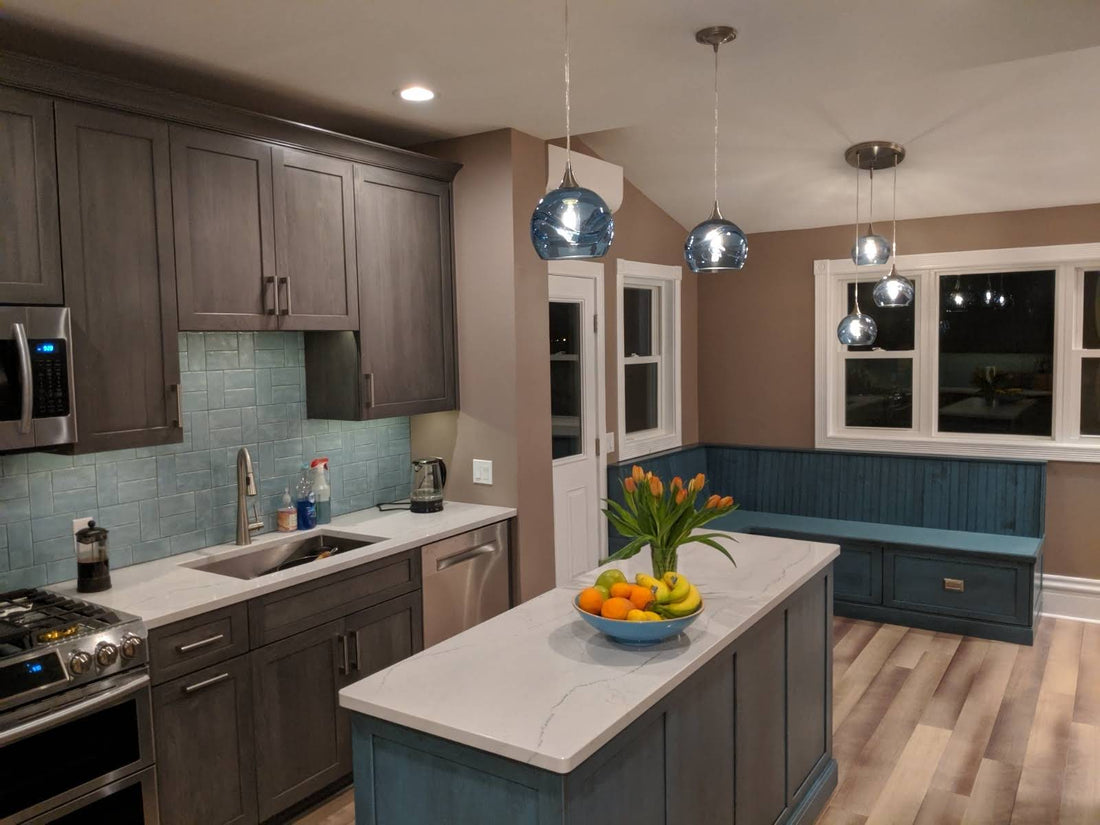
How to Create the Perfect Lighting Plan for Your Home
Lighting plays a key role in how we function and perform tasks within our homes. Whether you like natural lighting’s warmth or artificial lighting’s look, each home has a unique balance that caters to its resident’s needs. This mixture of lighting throughout your home is known as a lighting plan. While you may not know what it is, this plan is crucial for emphasizing an area’s focal points and allowing rooms to be used in certain ways. If you’re unsatisfied with your lighting, learn how to create the perfect lighting plan for your home.
The Importance of a Lighting Plan
Deciding on your home’s lighting can be a frustrating task when you’re not sure what you need. Though you know you want to incorporate more light into your home’s design, you might not know how to make that happen. Lighting plans exist for this exact reason. Ultimately, taking the time to develop a detailed lighting plan allows you to take another look at your home and record what you’ll use each area for. In knowing this, you can find the best combination of artificial and natural lighting to fulfill your needs within the home.
Contributing Factors to Consider
If you’re going to create the perfect lighting plan for your home, you need to know what contributes to an effective one. Your plan shouldn’t be about just the lighting itself, but rather, the items, activities, and people that you’ll need the light for. It’s through considering what your needs are that you can find the proper lighting in the most efficient way. Here are just a few important factors to consider:
How Each Space Will Be Used
Your plan’s first and most crucial aspect should be a detailed idea of what each room, and attached area, will be used for. This will give you an idea of how much lighting you’re going to need, what type it should be, and where to place fixtures around the room. If you’re designing a living room, for instance, you might want to use more atmospheric lighting to capture a welcoming and homey vibe. However, if you’re looking to light a home office or kitchen, you’ll need more focused, artificial lighting to perform specific tasks.
What Will Be Kept in Each Area
Next, inventory the items in each room and note how everything is arranged. This ensures that everything receives the proper amount of light when you install your fixtures—and that nothing is blocked or obscured. It’s for this reason as well that kitchens and bathrooms receive additional lighting, as these areas contain various tools that need proper lighting to use. Be sure to also consider any décor that you might want to highlight among your design. If you have a few of these pieces, you might want to incorporate additional target lighting to make them stand out.
Which Direction People Will Be Facing
If you’re using natural lighting in addition to artificial lighting fixtures, you’ll also need to consider the direction that individuals and furniture will be facing. It’s in these directions that you’ll need the most light to emphasize your room’s design. This knowledge also allows you to figure out the best places for accent lighting and create a visual focal point for visitors. Using light in this way greatly enhances your home’s design and provides the customized atmosphere you’re looking for.
Helpful Lighting Plan Tips and Tricks
Once you have all the information you need, organize it in a way that allows you to strategize. Fortunately, lighting plans are completely customized to the home and family, making it easy to use as long as you understand it. Use these helpful tips to make the most of your personal lighting plan:
Draw Out Your Plan
For many, having a visual of the home goes a long way in helping them map out their lighting arrangements. How detailed you want to be with your drawing is up to you; however, it’s recommended that you represent the furniture and how everything is situated. This gives you a better idea of where you could place lighting fixtures and allows you to experiment with locations. Be sure to also make the room shapes as accurate as possible to ensure that the light reaches everywhere you need it to.
Create a Budget
At the end of the day, your home lighting needs to be something you can afford. While proper lighting is key, new fixtures can be expensive and additional lighting can change your energy bill each month. So, be sure to factor these expenses into your budget and decide what you can afford before you purchase. Even if you need to install new lighting in separate segments to align with your budget, it’s necessary to do so for the sake of your financial stability.
Be Selective with Your Lighting Fixtures
Fortunately, there are a variety of different lighting fixtures to choose from—all with different price ranges, advantages, and styles. As such, it’s important for you to research the ones you’re interested in and weigh your options in order to find the right match for your design. Different fixtures also tend to have varying light radius, making it crucial that you know when it provides too much or too little light.
Don’t Over-Light
When referring to home lighting, it’s important to remember that less is often more. Over-lighting a room can bleach out your décor’s color, making it appear less vibrant—the opposite of your intended. Installing too much light can also inhibit your ability to see when performing certain tasks, resulting in potential accidents. Make sure that you check each lighting fixture’s radius before you install to lessen the chance of over-lighting.
Lighting plans are key to understanding what type of lighting you need in your home. We at Bicycle Glass Co. aim to supply you with versatile, hand-blown glass lighting fixtures to match any décor. Whether you’re looking for pendants, sconces, or semi-flush mount lighting fixtures, our products have the style and unique charm to complement your home.

